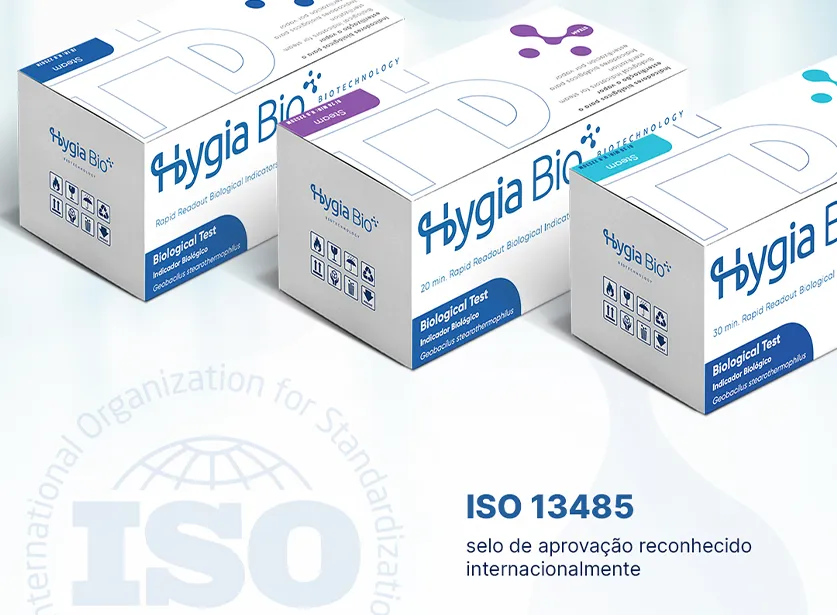Biosecurity is a topic that, with each passing day, must be included in the agenda of hospital directors and clinics. But, after all, what is biosecurity really about and why is it so important? Which are biosecurity’s objectives especially in clinics and hospitals? We’ll explain all of this in this article, besides showing some accessible and effective solutions that are extremely important to hospital biosecurity.
A biossegurança é um assunto que, cada dia mais, deve ser incluído na pauta dos diretores de hospitais e clínicas. Mas, afinal do que se trata a Biossegurança e por que ela é tão importante assim? Quais os objetivos da Biossegurança especialmente em clínicas e hospitais? Vamos te explicar nesse artigo, além de mostrar algumas soluções acessíveis e eficazes que são extremamente importantes para a segurança hospitalar.
How Biosecurity works
Biosecurity is a set of practices that diminishes the biological risks that are, naturally, related to the hospital’s routine, such as:
- Hospital Infections: infections acquired in the hospital or other health units, which can occur in patients and health workers.
- Diseases transmitted by blood: health workers are at risk of exposing themselves to diseases transmitted by blood, such as HIV, hepatitis B and C, through needles’ punctures and other wounds with sharp objects.
- Tuberculosis: an infectious disease caused by the bacteria Mycobacterium tuberculosis. In hospital environments, especially in health units that treat patients with active tuberculosis, there is the risk of transmitting aerial diseases to patients and health workers.
With the recent transformations that hospitals and clinics are going through, biosecurity must be even more stimulated to protect the health workers, the patients, and the natural environment.
Concerning the institutions and their members, biosecurity takes care of:
- Adequate installations and infrastructure;
- Laboratory and hospital good practices;
- Exposition of professionals to biological agents;
- Qualification and team training
It is worth remembering that biosecurity in health actions goes beyond, also encompassing the problems related to the objects that health workers use, such as aprons, lab coats, and stethoscopes, for example. When considering biosecurity in hospital environments, the objectives are quite evident. Prevention is the keyword. Clinics and hospitals need to take practical precautions. Among these are:
Gloves
The use of surgical and procedure gloves protects the professional from coming into contact with materials that can cause allergies and skin irritation.
Glasses
Protects the eyes from chemical materials, infectious and abrasive. But these glasses need to be resistant and transparent to bring security and help the professional’s sight in their activities.
Masks
In case of diseases that can be transmitted by contact with coughs, sneezes, and other secretions, the mask is an ally that helps diminish the propagation of viruses. We know this well because we went through the recent Covid-19 pandemic, where we had to wear, for a lot of time, these masks and we saw in practice how they are needed for out protection.
However, there are different kinds of masks, with variable levels of protection. Therefore, it is important to be careful when choosing which masks need to be used in the hospital.
Lab coats
The lab coats are considered important PPEs because they provide a bigger area of protection, covering the torso and arms of professionals. This way, they help avoid the contact of dangerous substances with the professionals’ skin, allowing as well to facilitate their work, due to the pockets that the lab coats contain.
The solution to hospitals and clinics
We are born to do exactly that: inovate to bring a safer medical environment, lowering the risk of infections related to healthcare. But how do we do this? Through the use of our bioindicators. Nós nascemos com o objetivo de fazer exatamente isso, inovar para tornar o ambiente médico-hospitalar mais seguro, reduzindo os riscos de infecções relacionadas aos cuidados de saúde. Como fazemos isso? Por meio dos nossos indicadores biológicos.
What are biological indicators?
It is a device that is used to rate the efficacy of the sterilization processes. It contains bacteria spores and other types of resistant microorganisms that are known to survive in extreme conditions.
The purpose of using a biological indicator is simple: if the sterilization is effective enough to destroy these resistant spores, then it is safe to assume that it also eliminates other microorganisms potentially less resistant that were present on the sterilized equipment.
Biological indicators by fluorescence
Autonomous biological indicators with visual or rapid fluorescence, it was projected to monitor and assure the efficacy of the sterilization. The biological indicator of fast reading was designed and developed to quickly evaluate the sterilization cycles of formaldehyde.
The reading process pf the biological indicator consists in the interaction between the enzyme produced by the bacteria Geobacillus stearothermophilus and the fluorescent subtract present in the culture.
The response time occurs in about 2 hours after the incubation.
pH Biological Indicators
The pH Biological Indicators, used in health estabilishments utilizados em estabelecimentos de saúde such as medical and dental clinics, as well as tattoo and esthetics studios. The biological indicator with visual reading of pH was designed to assure sterilization through vapor assisted by vacuum and air movement by gravity at 121 – 135°C with a response time of a maximum of 24 hours.
The reading is made by checking the change of color due to the acidification of the culture medium, that goes from purple to yellow when the process fails.
We provide accessible and effective solutions thinking on clinics and hospitals. Click here and check more about our services and products, and get in contact with us!








